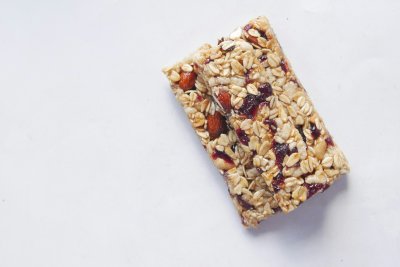The next government could save the NHS £300 million by introducing a sugary drinks duty.
The Children’s Food Campaign has published an interactive tool on its website that allows people to view the impact a sugary drinks duty could have in their local area. The figures show that the introduction of a duty on sugary drinks could reduce cases of diet-related diseases by tens of thousands, as well as save the NHS and public health budgets in England £300 million over twenty years.
Soft drinks are the largest single source of sugar for children aged 4-10 years and teenagers. The research, published in association with University of Liverpool academic Brendan Collins and Food Active, shows that if the government introduced a 20 pence per litre sugary drinks duty in England, then the impact nationally over twenty years could be to:
- reduce the cases of diabetes by just under 50,000
- prevent almost 9000 cases of bowel cancer
- reduce strokes and cases of coronary heart disease by over 33,000
- save the NHS at least £15million a year in healthcare costs for treating those diseases.
- improve the quality of life for tens of thousands of residents.
Outside of London, the impact on obesity and calorie reduction could be greatest in places such as Slough, Manchester, Luton, Blackburn, Leicester, Birmingham, Milton Keynes, Bradford and Nottingham, which have the highest relative proportion of younger demographics who typically consume the most sugary drinks. The local authorities set to gain the most total savings and health benefits from a sugary drinks duty include Birmingham, Leeds, Durham, Cornwall, Sheffield and Bradford – due to their large populations.
The interactive tool, along with full data sources and methodology, can be viewed at www.childrenshealthfund.org.uk
Malcolm Clark, co-ordinator of the Children’s Food Campaign, said:
“Current taxes on foods are a mess, and don’t support people choosing healthier options. A 20p per litre sugary drinks duty would save lives and money across England, and ease the pressure on NHS services locally. It is a logical, proportionate and effective measure. Using the revenue to set up a Children’s Health Fund, paying for programmes to improve children’s health and protect the environment they grow up in, would also ensure that this was a progressive measure, benefiting families in poverty and on low incomes.”
“Public health directors in North West England and in Cardiff, as well as the London Health Commission, have publicly backed a sugary drinks duty. We hope this new research encourages public health directors across England to join their counterparts in calling for the government to introduce a nationwide duty.”
Meradin Peachey, Faculty of Public Health’s Vice President for Standards and Director of Public Health in Newham:
“Just as extra taxes on cigarettes have helped to change purchasing habits and reduce smoking, adding 20p per litre onto the price of sugary drinks would encourage people to consume less and lead to improvements in quality of life. I hope this new research strengthen the case for the government to introduce a nationwide duty.”
Christine Lewis, national officer, Unison:
“Diet-related ill health disproportionally affects lower income groups. We support the calls for a sugary drinks duty, and would like to see the money raised used for a Children’s Health Fund to further tackle health inequalities and to continue supporting the great improvements in school food.”
CitizensUK, the alliance of local community organising groups, including groups in Nottingham, Milton Keynes, Birmingham, Leeds and London, said:
“We are calling for a Children’s Health Fund to enable a step-change in early intervention. Since there is no spare money in the NHS, we are calling for a duty on sugary drinks, which will itself reduce diabetes and obesity.”
Professor Damien Walmsley, British Dental Association’s scientific adviser:
"A tax on sugary drinks and food is a no brainer. It's a scandal that one in eight of our three-year olds currently experiences tooth decay. It's time we tackled the problem at source.”
Contact:
For further information and interviews, please contact Malcolm Clark on 0203 5596 777 or 07733322148, or malcolm@sustainweb.org
Copies of the data, including a full region-by-region breakdown by local authority, can be emailed to you. Full data sources and methodology can be viewed at www.childrenshealthfund.org.uk
Notes:
1) The Sugary Drinks Duty Impact Model
The model used to show the impact of a 20% duty on sugar sweetened beverages was created by Brendan Collins, Research Fellow in Health Economics, University of Liverpool. He presented the research to the Society for Social Medicine, 58th Annual Scientific Meeting, Keble College, University of Oxford, on 12 September 2014.
The model shows the impact of a possible sugary drinks duty on rates of obesity and obesity-related disease over 20 years for each local authority. Broadly speaking, as a duty makes sugary drinks more expensive, so consumption reduces. As the number of daily calories consumed reduces, so obesity rates then fall. This then leads to a decrease in obesity-related disease incidence and the associated quality adjusted life year loss.
An interactive version of the model, along with data sources and methodology, can be viewed at www.childrenshealthfund.org.uk
The results are based on national sugary drinks consumption levels and then applied to the population-specific data for each local authority. There are different ways of measuring how much sugar sweetened drinks we consume, therefore the model includes a range of values based on these estimates. In total the model takes 5 different parameters and runs 10,000 possible scenarios based on the data, to come up with the highest impact and lowest impact scenarios. It is the mean of these two scenarios that the final figures are drawn from.
The model only considers the effect of the duty itself, so any benefits coming from the expenditure of the money raised from the duty (via a Children’s Health Fund or similar) could potentially further increase the impact and health improvements.
The model also does not include the impact on dental health – so the NHS savings and health benefits would be expected to even greater with that aspect included.
2) Food Active
We acknowledge the support of Food Active, a Healthy Weight Campaign established by the North West Directors of Public Health, who funded Brendan Collin’s research and also the creation of the online interactive model. www.foodactive.org.uk
Appendices – key data on the impact of a sugary drinks duty:
Note: Quality-adjusted life year (QALY) is a measure of the state of health of a person in which the benefits, in terms of length of life, are adjusted to reflect the quality of life. One QALY is equal to 1 year of life in perfect health. It is often measured in terms of the person's ability to perform the activities of daily life, free from pain and mental disturbance.
1) Regional and national totals
This table is ordered in order of greatest healthcare cost savings over a 20 year period
|
Region |
Reduction in calories per day-mid |
Estimated change in diabetes cases (over 20 years) |
Estimated change in Stroke/CHD cases (over 20 years) |
Estimated change in Cancer cases (over 20 years) |
Estimated QALYs gained (over 20 years) |
Total health cost savings (over 20 years) (£) |
|
|
|
|
|
|
|
|
|
South East |
6.52 |
-7,736 |
-5,273 |
-1,383 |
130,132 |
47,115,879 |
|
London |
6.76 |
-6,359 |
-4,334 |
-1,137 |
106,958 |
38,725,539 |
|
North West |
6.52 |
-6,318 |
-4,306 |
-1,130 |
106,283 |
38,481,068 |
|
West Midlands |
6.50 |
-5,581 |
-3,804 |
-998 |
93,887 |
33,992,927 |
|
Yorkshire & Humber |
6.50 |
-5,392 |
-3,675 |
-964 |
90,700 |
32,839,248 |
|
East of England |
6.50 |
-5,222 |
-3,559 |
-934 |
87,846 |
31,805,974 |
|
South West |
6.32 |
-4,986 |
-3,398 |
-891 |
83,863 |
30,363,734 |
|
East Midlands |
6.50 |
-4,231 |
-2,884 |
-756 |
71,172 |
25,768,796 |
|
North East |
6.51 |
-2,813 |
-1,917 |
-503 |
47,310 |
17,129,253 |
|
|
|
|
|
|
|
|
|
England |
6.51 |
-48,638 |
-33,150 |
-8,695 |
818,151 |
£296,222,417 |
2) Top 25 local authorities in England with greatest calorie reduction
This table is ordered in order of greatest average calorie reduction per resident aged 4 years or older
|
Region |
Area Name |
Reduction in calories per day-mid |
Estimated change in diabetes cases (over 20 years) |
Estimated change in Stroke/CHD cases (over 20 years) |
Estimated change in Cancer cases (over 20 years) |
Estimated QALYs gained (over 20 years) |
Total health cost savings (over 20 years) (£) |
|
London |
Newham LB |
7.15 |
-256 |
-174 |
-46 |
4,298 |
1,556,226 |
|
London |
Tower Hamlets LB |
7.02 |
-173 |
-118 |
-31 |
2,911 |
1,054,143 |
|
South East |
Slough UA |
6.98 |
-115 |
-79 |
-21 |
1,942 |
703,040 |
|
London |
Hackney LB |
6.96 |
-191 |
-130 |
-34 |
3,212 |
1,162,809 |
|
London |
Barking and Dagenham LB |
6.95 |
-188 |
-128 |
-34 |
3,160 |
1,144,284 |
|
London |
Haringey LB |
6.92 |
-187 |
-127 |
-33 |
3,141 |
1,137,261 |
|
North West |
Manchester MCD |
6.89 |
-404 |
-275 |
-72 |
6,788 |
2,457,657 |
|
East of England |
Luton UA |
6.88 |
-194 |
-132 |
-35 |
3,266 |
1,182,464 |
|
London |
Waltham Forest LB |
6.87 |
-209 |
-142 |
-37 |
3,512 |
1,271,556 |
|
London |
Brent LB |
6.86 |
-237 |
-162 |
-42 |
3,986 |
1,443,318 |
|
London |
Lambeth LB |
6.86 |
-235 |
-160 |
-42 |
3,952 |
1,431,049 |
|
North West |
Blackburn with Darwen UA |
6.86 |
-134 |
-91 |
-24 |
2,251 |
815,170 |
|
London |
Southwark LB |
6.86 |
-258 |
-176 |
-46 |
4,337 |
1,570,138 |
|
London |
Greenwich LB |
6.86 |
-203 |
-138 |
-36 |
3,414 |
1,235,986 |
|
London |
Redbridge LB |
6.86 |
-227 |
-155 |
-41 |
3,813 |
1,380,657 |
|
East Midlands |
Leicester UA |
6.85 |
-276 |
-188 |
-49 |
4,651 |
1,683,949 |
|
West Midlands |
Birmingham MCD |
6.84 |
-1,049 |
-715 |
-188 |
17,651 |
6,390,832 |
|
London |
Lewisham LB |
6.84 |
-250 |
-170 |
-45 |
4,205 |
1,522,340 |
|
South East |
Milton Keynes UA |
6.84 |
-231 |
-157 |
-41 |
3,884 |
1,406,256 |
|
London |
Hounslow LB |
6.83 |
-184 |
-126 |
-33 |
3,102 |
1,123,191 |
|
London |
Ealing LB |
6.82 |
-227 |
-155 |
-41 |
3,821 |
1,383,283 |
|
South East |
Bracknell Forest UA |
6.82 |
-106 |
-72 |
-19 |
1,788 |
647,225 |
|
Yorkshire and The Humber |
Bradford MCD |
6.82 |
-500 |
-341 |
-89 |
8,411 |
3,045,486 |
|
London |
Enfield LB |
6.80 |
-264 |
-180 |
-47 |
4,444 |
1,608,894 |
|
East Midlands |
Nottingham UA |
6.80 |
-273 |
-186 |
-49 |
4,597 |
1,664,351 |
3) Top 25 local authorities in England with greatest health savings and greatest reduction in cases of disease
This table is ordered in order of greatest healthcare cost savings over a 20 year period
|
Region |
Area Name |
Reduction in calories per day-mid |
Estimated change in diabetes cases (over 20 years) |
Estimated change in Stroke/CHD cases (over 20 years) |
Estimated change in Cancer cases (over 20 years) |
Estimated QALYs gained (over 20 years) |
Total health cost savings (over 20 years) (£) |
|
West Midlands |
Birmingham MCD |
6.84 |
-1,049 |
-715 |
-188 |
17,651 |
6,390,832 |
|
Yorkshire and The Humber |
Leeds MCD |
6.62 |
-801 |
-546 |
-143 |
13,475 |
4,878,838 |
|
North East |
Durham UA |
6.45 |
-570 |
-388 |
-102 |
9,582 |
3,469,422 |
|
South West |
Cornwall UA |
6.28 |
-511 |
-348 |
-91 |
8,593 |
3,111,309 |
|
Yorkshire and The Humber |
Sheffield MCD |
6.59 |
-506 |
-345 |
-90 |
8,507 |
3,080,144 |
|
Yorkshire and The Humber |
Bradford MCD |
6.82 |
-500 |
-341 |
-89 |
8,411 |
3,045,486 |
|
South West |
Wiltshire UA |
6.52 |
-443 |
-302 |
-79 |
7,453 |
2,698,464 |
|
Yorkshire and The Humber |
Kirklees MCD |
6.66 |
-425 |
-290 |
-76 |
7,150 |
2,588,923 |
|
North West |
Liverpool MCD |
6.65 |
-405 |
-276 |
-72 |
6,820 |
2,469,206 |
|
North West |
Manchester MCD |
6.89 |
-404 |
-275 |
-72 |
6,788 |
2,457,657 |
|
South West |
Bristol UA |
6.67 |
-389 |
-265 |
-70 |
6,548 |
2,370,682 |
|
Yorkshire and The Humber |
Wakefield MCD |
6.53 |
-362 |
-247 |
-65 |
6,088 |
2,204,109 |
|
Yorkshire and The Humber |
East Riding of Yorkshire UA |
6.30 |
-334 |
-228 |
-60 |
5,626 |
2,037,032 |
|
Yorkshire and The Humber |
Doncaster MCD |
6.55 |
-332 |
-226 |
-59 |
5,582 |
2,020,975 |
|
North East |
Northumberland UA |
6.35 |
-331 |
-225 |
-59 |
5,560 |
2,012,979 |
|
London |
Croydon LB |
6.80 |
-330 |
-225 |
-59 |
5,547 |
2,008,482 |
|
West Midlands |
Dudley MCD |
6.49 |
-330 |
-225 |
-59 |
5,546 |
2,008,088 |
|
West Midlands |
Sandwell MCD |
6.69 |
-325 |
-222 |
-58 |
5,468 |
1,979,593 |
|
North East |
Sunderland MCD |
6.51 |
-318 |
-217 |
-57 |
5,352 |
1,937,841 |
|
West Midlands |
Coventry MCD |
6.68 |
-314 |
-214 |
-56 |
5,287 |
1,914,309 |
|
North West |
Wigan MCD |
6.57 |
-311 |
-212 |
-56 |
5,238 |
1,896,646 |
|
North West |
Cheshire East UA |
6.41 |
-302 |
-206 |
-54 |
5,080 |
1,839,356 |
|
South East |
Medway Towns UA |
6.74 |
-301 |
-205 |
-54 |
5,070 |
1,835,642 |
|
Yorkshire and The Humber |
Kingston upon Hull UA |
6.69 |
-292 |
-199 |
-52 |
4,917 |
1,780,408 |
Sugary Drinks Duty: Support the campaign for a sugary drinks duty, to pay for programmes to improve childrens health and protect the environment they grow up in.








